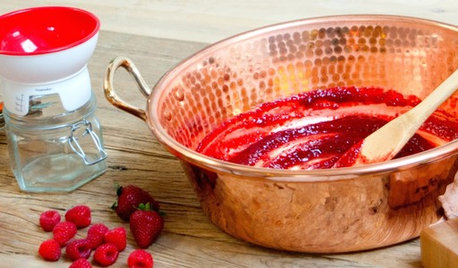What do I do to save seeds?
andreaz6wv
15 years ago
Related Stories

GARDENING GUIDESHow to Plant a New Lawn From Seed
Choose from more grass varieties and save money over sod by starting your lawn from seed
Full Story
CONTAINER GARDENS8 Easy Container Plants to Grow From Seed
Get beautiful blooms and herbs in summer by starting these choice garden picks from seed in spring
Full Story
GARDENING GUIDESSeeds or Seedlings? How to Get Your Garden Started
Growing delicious herbs and vegetables starts with knowing your goals and when you want to plant
Full Story
LANDSCAPE DESIGNGet Along With Less Lawn — Ideas to Save Water and Effort
Ditch the mower and lower your water bill while creating a feast for the eyes with diverse plantings and gathering places
Full Story
LIFEThe Top 5 Ways to Save Water at Home
Get on the fast track to preserving a valuable resource and saving money too with these smart, effective strategies
Full Story
GARDENING GUIDES8 Unthirsty Plants Help You Save Water in Style
Spend less effort and money on your landscape with drought-tolerant and native plants that liven up your yard
Full Story
SHOP HOUZZHouzz Products: Save a Taste of Summer
Can't bear to part with the flavors of summer peaches, berries and tomatoes? Then jam on it!
Full Story
MOST POPULARSummer Crops: How to Grow Sunflowers
Savor snack-tastic sunflower seeds once the radiant blooms have faded — if the birds have saved you any, that is
Full Story
ARCHITECTURESaving Grace: Reconstruction Rescues a Michigan Barn
Working-farm rustic goes stylishly modern, thanks to the loving reinvention efforts of a determined homeowner
Full Story






Macmex
andreaz6wvOriginal Author
Related Professionals
Baltimore Landscape Architects & Landscape Designers · Fillmore Landscape Architects & Landscape Designers · Forest Park Landscape Architects & Landscape Designers · Mount Wilson Landscape Architects & Landscape Designers · Medford Landscape Contractors · Costa Mesa Landscape Contractors · Euclid Landscape Contractors · Fort Worth Landscape Contractors · Holland Landscape Contractors · Los Banos Landscape Contractors · Greenfield Landscape Contractors · North Bellport Outdoor Lighting & Audio Visual Systems · Austin Roofing & Gutters · Cincinnati Roofing & Gutters · East Hill-Meridian Roofing & Guttersthepodpiper
Macmex
kr222
Macmex
andreaz6wvOriginal Author